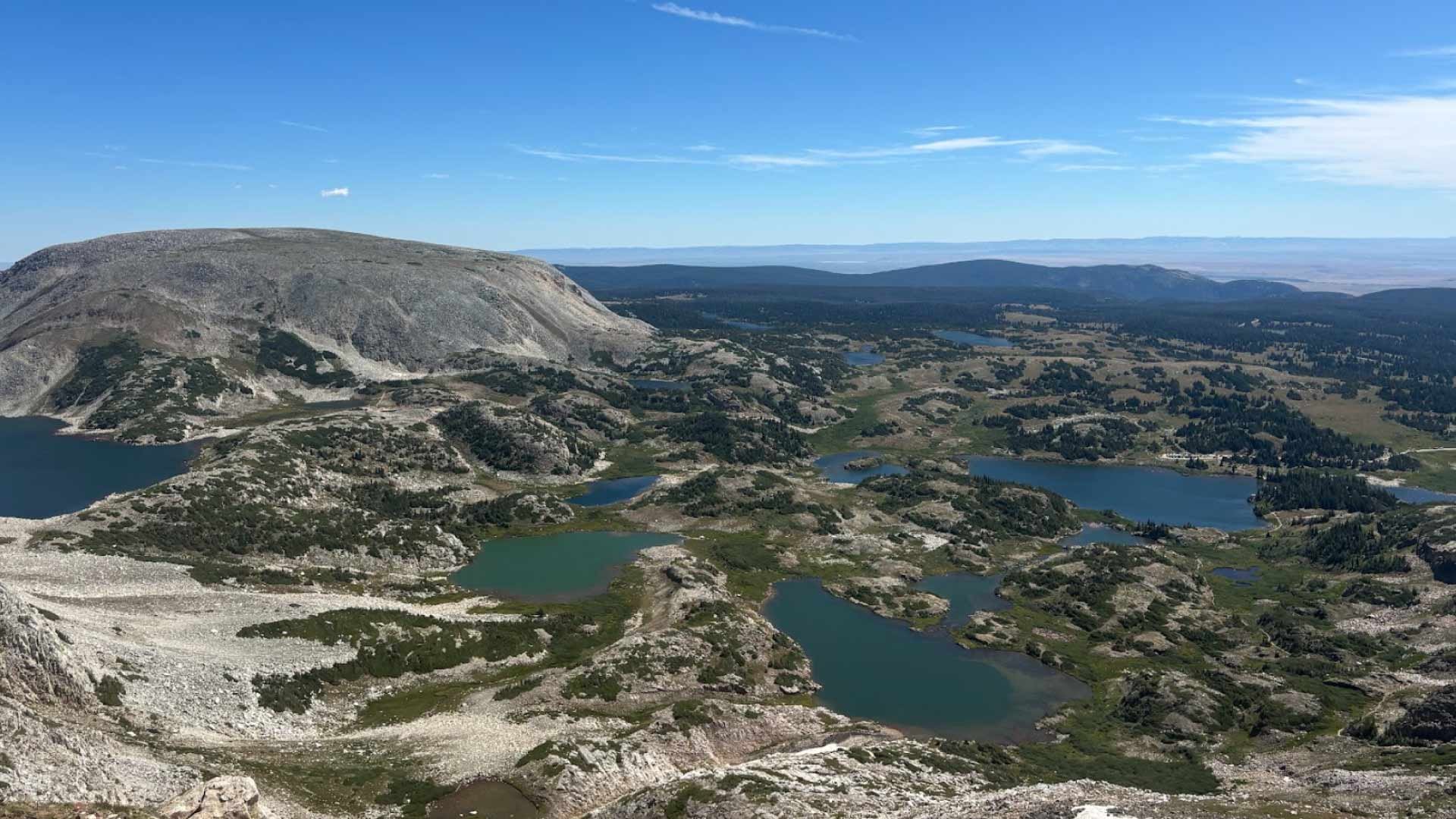
Welcome to Headwaters of the Colorado Initiative
Working Together for Resilient
Rangeland, Forests & Watersheds
Headwaters of the Colorado (HOC) Initiative is a collaborative, science-based effort dedicated to restoring and preserving the vital forested and rangeland headwaters of the Colorado River Basin. Spanning nearly 2 million acres across Wyoming and Colorado, our work supports the resilience of ecosystems, communities, and economies that depend on these landscapes. Through partnerships, innovative strategies, and cross-boundary collaboration, HOC addresses the complex ecological and social challenges impacting water, forests, and biodiversity in this critical region.
Commitment to Collaboration
HOC is uniquely positioned to address these challenges through science-based planning, partnerships, and active engagement with all stakeholders. By fostering collaboration, we aim to create sustainable solutions for a resilient future.

Mission
Create a resilient and functioning forest and rangeland headwaters within the landscapes of the Little Snake, Elk, and Elkhead rivers of Wyoming and Colorado through science-based ecosystem planning, coordinated partnerships, focused funding, and collaboration across all lands.
Vision
Demonstrate landscape resilience within dynamic conditions through a fully functioning forested rangeland watershed in the headwaters of the Colorado River that benefits local and downstream communities, ecosystems, and economies.
Goals
Proactively address ecological and social stressors driving ecosystem change to achieve the following goals:
Increase water retention, water supply, and water quality.
Increase agricultural production, including agro-forestry.
Improve and maintain forest health and sequester carbon.
Decrease the threat of catastrophic wildfire.
Protect communities and infrastructure by creating a healthy forested landscape.
Improve wildlife habitat and fisheries and increase biodiversity.
Objectives
Collaborate across boundaries to implement sustainable solutions and achieve the following objectives:
Enhance headwater resources through partnerships, restoration, and management across boundaries.
Scale up forest and rangeland management.
Integrate forest productivity with biodiversity conservation.
Support community-based sustainable forest products and related resource-based economies.
Enable economically viable rural communities to thrive.
A Multi-State, Multi-Disciplinary Approach
While HOC’s focus is landscape-level and cross-boundary, we are also mindful of differences in funding realities, culture, land tenure, and priorities between the two states.
HoC brings a holistic, integrated lens to the health and resilience of our forested and rangeland watershed. However, we recognize that the concepts of forest health and watershed health may hold different meanings for different people. We are committed to exploring and communicating what a functional forested watershed means with our partners and stakeholders.
The Landscape
The HOC geography is located at the headwaters of the Upper Colorado River Basin, including the Elk, Elkhead, and Little Snake Rivers, which are tributaries to the Upper Yampa River in Wyoming and Colorado. This area encompasses the Medicine Bow-Routt National Forest and spans a 1.9-million-acre rural watershed.
Ecological and Recreational Importance
This region serves as:
A critical refuge for migratory birds traveling the Pacific Flyway.
A recreational destination for skiing, hunting, fishing, hiking, and camping.
A biodiverse habitat supporting big game species (mule deer, pronghorn, elk), Greater sage-grouse, Columbian sharptail grouse, black bears, mountain lions, endangered fish species, and migratory birds.
The Issues
Hydrology and Water Scarcity
The HOC geography faces complex shifts in hydrology due to:
Warming temperatures and reduced snowpack.
Increased demands on water resources with declining supplies.
Persistent, potentially irreversible declines in watershed runoff to the Colorado River Basin.
Key Impacts:
Downstream agricultural, recreational, industrial, and environmental sectors rely on these watersheds.
Sustainable water management and restoration are critical to balance supply and demand.
Forest Health and Wildfire Risks
Historic fire suppression, insect infestations, and changing fire regimes have increased wildfire risks, including:
Severe wildfires affecting sediment, streamflow, and nutrient cycles.
The need for ecologically beneficial fire and upland watershed management.
Key Impacts:
Supports projects for wildfire mitigation and a healthy forest ecosystem.
Encourage forest management practices for ecological benefits.
Socioeconomic Challenges
Diverse values and demands on water and forest resources complicate management.
Stakeholder factions with differing preservation and use values impact forest and land-use decisions.
Challenges in NEPA processes and litigation threaten progress on forest management.
Key Impacts:
Creates employment opportunities and supports local communities.
Facilitates partnerships between organizations within the watershed.






